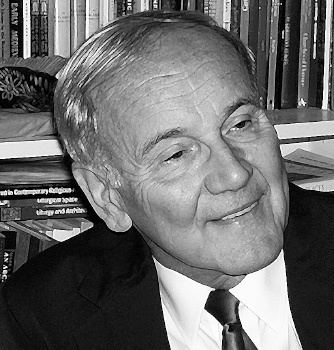Name Richard Vosko | Education Syracuse University | |
 | ||
Books God's House is Our House: Re-imagining the Environment for Worship | ||
Richard S. Vosko (born 1943) is an American Roman Catholic priest of the Diocese of Albany and liturgical design consultant who has overseen the redesign and renovation of numerous churches and cathedrals in the United States. Vosko has worked throughout the U.S. and Canada as a designer and consultant for worship environments since 1970.
Contents
He is the author of God's House Is Our House: Re-imagining the Environment for Worship (Collegeville, MN: The Liturgical Press, 2006) and Designing Worship Spaces: The Mystery of a Common Vision (Meeting House Essay #8; Chicago: Liturgy Training Publications, 1996).
Design principles
Vosko states that today's cathedrals should "resonate" with the makeup of the dioceses they serve." The role of the cathedral in today's society is different from the times that came before. "The vision of 150 years ago had to do with a reflection of their own understanding of the Church and its liturgy." They were churches "designed to house a liturgy of a different age and genre – a different, pre-Vatican II understanding of what liturgy is." Since then, the Church in America, originally conceived as a missionary country, has shed that identity by having more than 70 million members. "The reasons for retaining and building our churches have changed."
Vosko's perspective draws heavily from Environment and Art in Catholic Worship (EACW), a 1978 document drawn up by a standing committee of the Bishops Committee of the Liturgy of the United States Conference of Catholic Bishops(USCCB). Although the EACW was never voted on by the full body of bishops and did not carry the force of law, it was used as the standard for new church design and renovation for over 20 years. EACW’s status has been controversial since its inception not only due to its canonical standing but also its content. EACW uses as a basis the Second Vatican Council’s emphasis on Christ’s presence in the assembly celebrating mass and – in what some consider a stretch – shifts the basis for the design of the “liturgical environment” to the “the action of the assembly” of believers rather than the principles from liturgy, theology, or architecture. The EACW states: "Among the symbols with which liturgy deals, none is more important than this assembly of believers." Vosko states that the "new focus on the assembly" comes from the "recovered role of the people of God during acts of worship and not because of any subversive movement to discount the presence of God in the church." In Vosko's opinion, it is the assembly, not the church building, which must "transcend the ordinary."
In 2000, the EACW was replaced by Built of Living Stones: Art, Architecture, and Worship (BLS). The BLS has been voted on and approved by the USCCB. Vosko has been a critic of this new document.
Vosko church designs and renovations emphasize:
Completed projects
Vosko has presided over renovations or contributed to the design of the following cathedrals and churches:
Cathedrals
Churches
Criticism
Some have branded his church renovations as wreckovations due to their objection to the large scale removal of sacred art and ornamentation in service of Vosko's iconoclastic effort to achieve a non-traditional re-alignment of essential church elements. Architect Michael Rose accuses Vosko of being a "liturgy deconstructionist."
Other
Vosko served as the chief liturgist for Bishop Howard Hubbard of the Roman Catholic Diocese of Albany.
